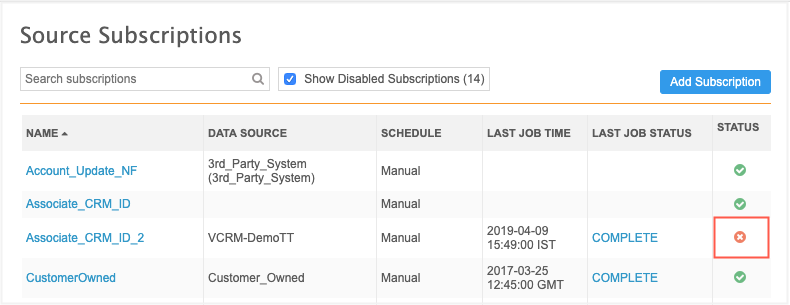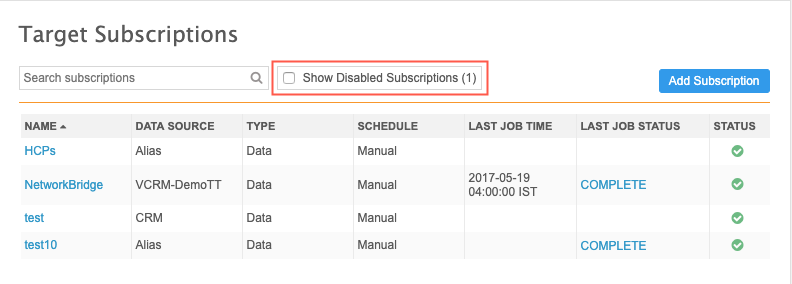Inactive subscriptions
DM
When subscriptions are no longer used or are seldom used, they can be inactivated so they no longer display on the subscription list page.
When a subscription is inactivated, the following behavior occurs:
- Scheduled jobs do not run (in the Network UI or the API).
- Job triggers that are set for this subscription do not run.
- New job triggers cannot be added for the subscription.
- The subscription is removed from the list on its subscription list page.
After a subscription is inactivated, it can be enabled again. When a subscription is enabled again, any schedules or job triggers on the subscription will be active again; schedules will run at the set time and jobs will be triggered when the conditions are met.
Supported subscriptions
The following types of subscriptions can be inactivated:
- source subscriptions
- target subscriptions
- data maintenance subscriptions
Disable a subscription
Subscriptions can be inactivated in two ways:
-
Subscription list page - Click the icon in the Status column.

-
Subscription configuration page - Choose an option beside the Status heading.

The subscription status is Enabled by default for new subscriptions.
When you save your changes, a confirmation dialog displays. If job triggers are associated with the subscription, a reminder that they will not run also displays.
Manage inactivated subscriptions
After a subscription is inactivated, it no longer displays in the list on the main subscription page; only Enabled subscriptions display by default. The Show Disabled Subscriptions checkbox displays a count of subscriptions that are not enabled. Click the checkbox to add inactivated subscriptions back to the list.

Your choice for this checkbox is unique on each subscription type page. Network remembers your choice when you navigate to other pages or when you log out of the UI.
If Show Disabled Subscriptions is not selected, subscriptions that are not enabled cannot be found using the search field.
Exporting subscriptions
Subscriptions that are not enabled can be exported and imported to a target environment. For more information, see Managing configurations.